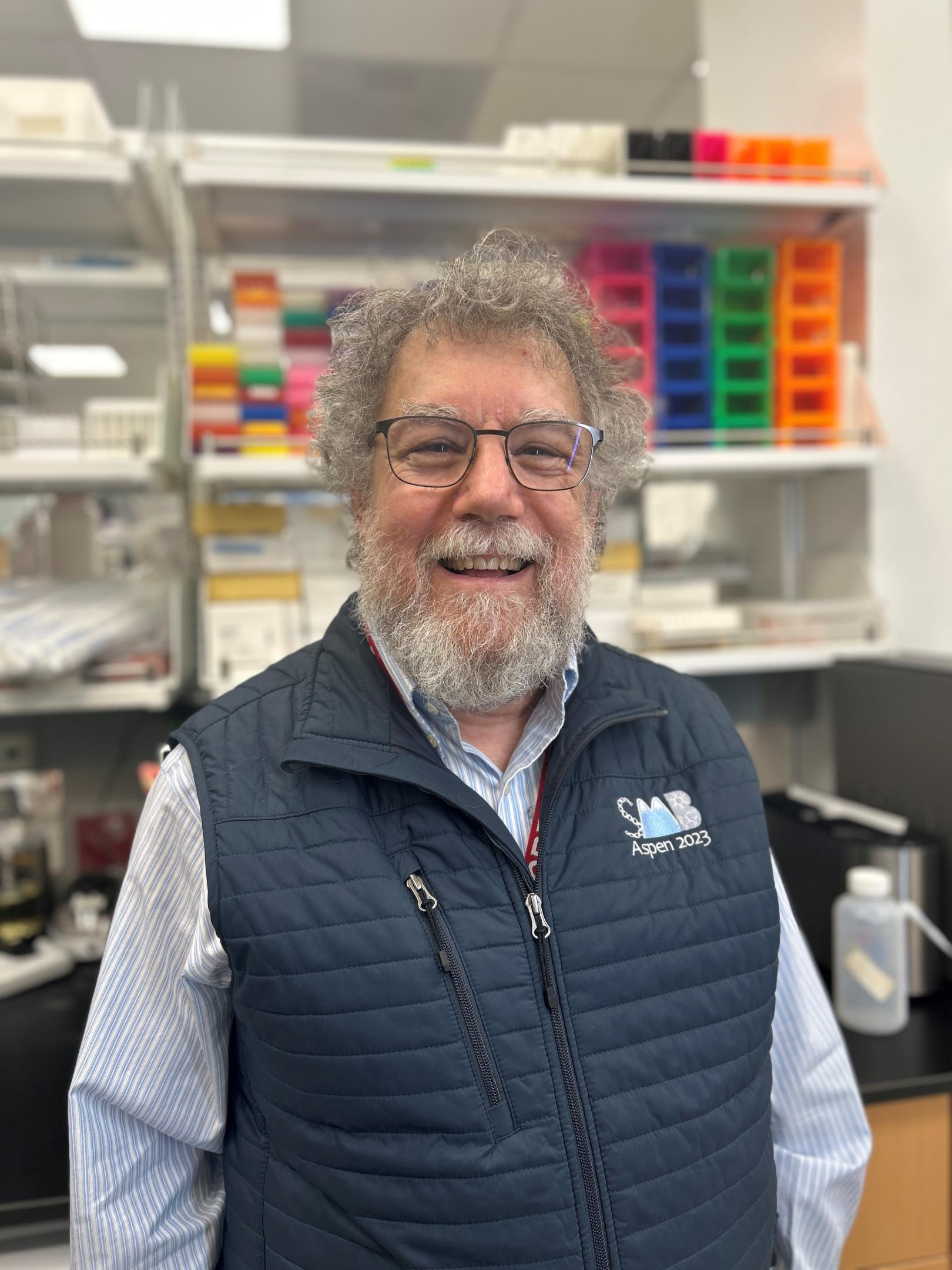
Stanford University │ Stanford, California
For leadership in developing methods and applications for nanoscale manipulations with light (“optical tweezers”) to elucidate biological mechanisms.
How can one possibly measure the miniscule forces that drive life’s fundamental processes? How does one hold onto something as small and elusive as a single biomolecule? These questions have long captivated biophysicist Steven Block, who harnessed the power of light to probe the invisible realm of biomolecular motors. Through his pioneering application and refinement of optical traps, also known as “optical tweezers,” Block opened a new window into the machinery of living cells, transforming our ability to study biology at its smallest scales.
In 1986, physicist Arthur Ashkin of Bell Laboratories demonstrated how laser light could be used to form an optical trap. The optical trap relies on a simple yet extraordinary principle: a focused beam of infrared laser light exerts radiation pressure, sufficient to apply mechanical forces that can capture and manipulate micrometer-scale objects in fluid, such as bacteria, gently grasping them without causing permanent damage. (In 2018, Ashkin would receive the Nobel Prize in Physics for this pioneering work.) Block saw the potential to adapt Ashkin's method to study individual biomolecules, including both proteins and nucleic acids, in real time as these work, by attaching molecules of interest to microscopic beads held by optical tweezers. Among these biomolecules are tiny, motor-like protein machines that are critical for cellular functions, such as replicating and transcribing DNA, or physically separating the chromosomes during cell division, or transporting molecular cargo throughout the cell.
Growing up with a fascination for both physics and the elegance of living systems, Block found his calling at the intersection of these fields. After completing his bachelor’s and master’s degrees in physics at the University of Oxford, he went on to receive a second master’s in biology from the University of Colorado before earning his Ph.D. in biophysics at the California Institute of Technology in 1983. This was followed by postdoctoral work at Stanford University that refined his focus on single-molecule biophysics. He went on to faculty positions at the Rowland Institute for Science and Princeton University before joining Stanford University in 1999, where he is currently a professor emeritus of applied physics and biological sciences. At Stanford, he established a lab that became a hub for groundbreaking experiments, merging precision instrumentation with creative scientific questions to reveal hidden details of life’s molecular engines.
Like many transformative ideas, optical trapping in biology faced initial skepticism—could laser beams actually hold biomolecules firmly enough to be measured without interfering with their function? Block’s rigorous experiments and elegant demonstrations silenced any doubts. His work inspired new methods and tools that spread to research labs worldwide, enabling further breakthroughs in understanding, for example, the complex process of folding and assembly in proteins and nucleic acids. By coupling sophisticated optical systems with sensitive detection methods, Block set a standard for investigating the mechanical underpinnings of life with a precision once thought impossible.
By manipulating single molecules—including motor proteins such as kinesin or the enzyme RNA polymerase—researchers could, for the first time, watch these molecular machines carry out their reactions, literally taking one step at a time. By so doing, Block and his colleagues illuminated core mysteries of how cells can move, transport cargo, and read genetic information.
One of Block’s hallmark achievements was demonstrating how the twin heads of the kinesin protein literally “walk” along microtubules, carrying vital cellular cargo in discrete steps covering just a handful of nanometers. By attaching microscopic beads to the tail of the kinesin protein and then using optical tweezers to hold these beads, his team successfully measured the piconewton-scale forces and the nanometer-scale distances associated with kinesin function. They showed that motor proteins can generate sufficient force to move comparatively heavy loads (on a cellular scale), despite their diminutive size. Later, he further refined and adapted single-molecule optical techniques to record the still smaller, angstrom-scale steps—an angstrom is one tenth of a nanometer—taken by RNA polymerase, the enzyme responsible for reading the genetic code, revealing how it travels from base to base along the double helix of DNA.
Over the course of his career, Block has received many distinguished awards for his innovative research, including the Biophysical Society’s Founders Award and the American Physical Society’s Max Delbrück Prize in Biological Physics. He is a member of the National Academy of Sciences and a fellow of the American Academy of Arts and Sciences, the American Physical Society, and the Biophysical Society. His numerous accolades reflect the impact of his research on multiple fields—from bioengineering to biophysics to molecular biology. Just as important, he has mentored an entire generation of scientists who continue to expand the power and reach of single-molecule techniques in laboratories throughout the globe.
Although his work dives deeply into the hidden realm of molecular forces and motions, Block has never lost sight of the bigger picture: understanding how life works at its most fundamental level. From clarifying how cells transport nutrients to illuminating how our genetic machinery avoids errors, his efforts have shown that the smallest of interactions can shed light on the largest mysteries of biology.
Today, Steven Block’s fusion of physics and biology stands as a testament to the power of interdisciplinary thinking. His optical traps—those gentle beams of light—have not only captured molecules but have also captured the imagination of scientists determined to explore life’s processes with unprecedented detail. Through his vision and leadership, Block has expanded our ability to understand the invisible forces that power life
Information as of April 2025.

